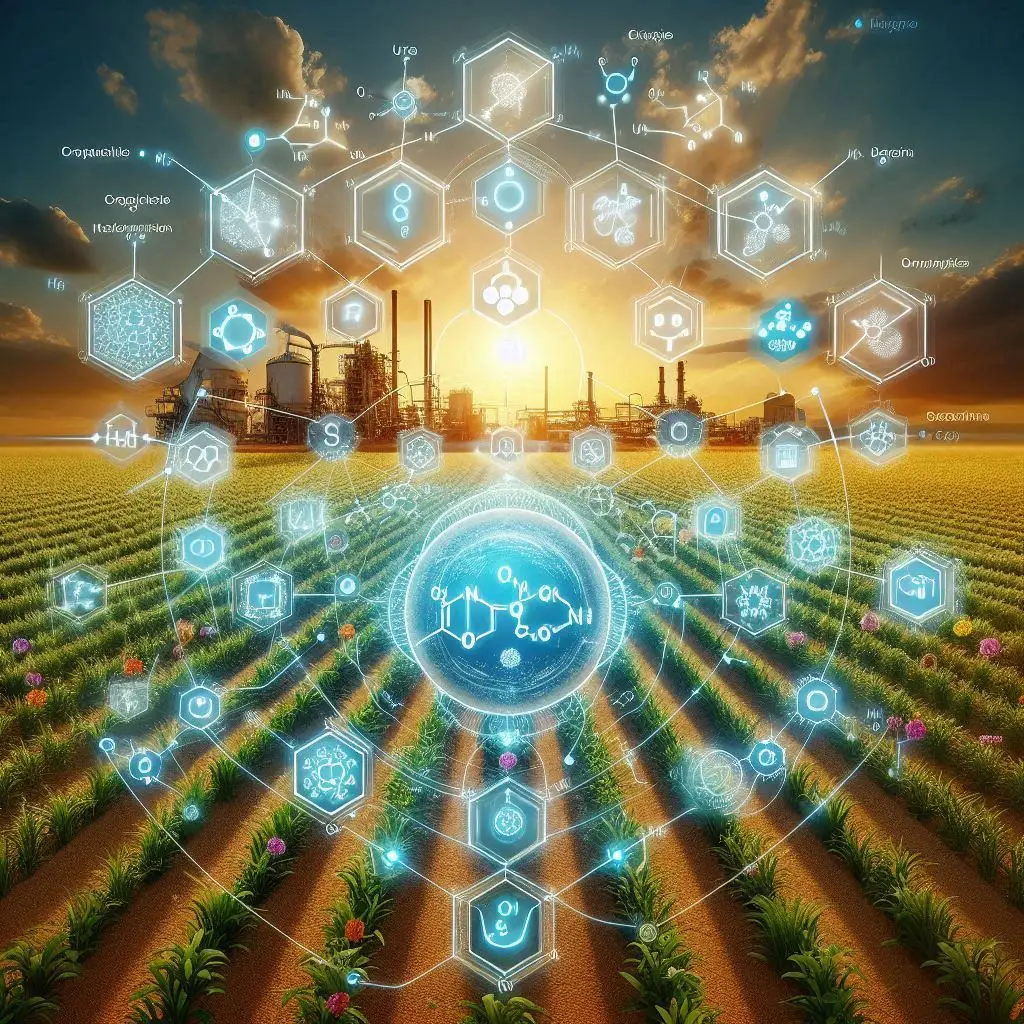
Optimizing Crop Growth: The Synergistic Role of Urea and Sulfur in Sustainable Agriculture
Introduction
Chemical compounds are the building blocks of matter, combining two or more elements to form substances with unique properties. These compounds are fundamental to various industries, from agriculture to pharmaceuticals. One notable compound is urea, widely used in fertilizers and industrial applications. Understanding chemical compounds and their characteristics is crucial for appreciating their impact on daily life and global industries.
What is a Chemical Compound?
A chemical compound is a substance formed when two or more chemical elements combine in a fixed ratio. These compounds exhibit distinct properties that differ from the individual elements they consist of. Compounds can be categorized as organic (containing carbon, such as urea) or inorganic (like water or sodium chloride).
Chemical compounds are essential in various sectors. For instance, urea (CO(NH₂)₂), an organic compound, plays a crucial role in agriculture as a nitrogen-rich fertilizer. Similarly, inorganic compounds like sulfur dioxide (SO₂) are significant in industrial processes. Understanding compounds like urea helps in optimizing their applications for environmental and economic benefits.
Chemical Compound List
Here's a list of common chemical compounds and their uses:
1. Water (H₂O) – Essential for all forms of life, involved in biological and chemical processes.
2. Urea (CO(NH₂)₂) – A key nitrogen-based fertilizer, enhancing plant growth and soil productivity.
3. Sodium Chloride (NaCl) – Commonly known as table salt, crucial for human consumption and food preservation.
4. Sulfuric Acid (H₂SO₄) – Used in the production of fertilizers, batteries, and industrial chemicals.
5. Carbon Dioxide (CO₂) – Vital for photosynthesis and used in the food and beverage industry.
6. Sulfur Dioxide (SO₂) – Important in the production of sulfuric acid and as a preservative in food.
Including urea in this list highlights its importance in agriculture and industrial chemistry. Its role in enhancing crop yields makes it a significant compound for global food security.
Chemical Compound Examples
Understanding specific examples of chemical compounds helps illustrate their diverse roles:
- Urea (CO(NH₂)₂): This organic compound is the most common nitrogen fertilizer, promoting healthy plant growth. It’s also used in animal feed and resin production.
- Sulfur Dioxide (SO₂): A significant industrial compound used to produce sulfuric acid and preserve dried fruits.
- Water (H₂O): Fundamental to life, used in drinking, sanitation, and industrial processes.
- Sodium Chloride (NaCl): Besides seasoning food, it is used in de-icing roads and manufacturing processes.
- Carbon Dioxide (CO₂): Employed in carbonation of beverages and as a refrigerant.
Each of these compounds, especially urea, demonstrates the diverse applications and essential roles that chemical compounds play across industries.
Is Water a Chemical Compound?
Yes, water (H₂O) is a classic example of a chemical compound, composed of two hydrogen atoms and one oxygen atom. It is fundamental to life, serving as a solvent, coolant, and a medium for various biochemical reactions.
While water is essential, compounds like urea are equally vital in agricultural and industrial contexts. Urea’s ability to supply nitrogen makes it indispensable for plant nutrition, complementing water's role in sustaining life. Both compounds exemplify how chemical compounds support ecosystems and human activities.
Why are Chemical Compounds Important?
Chemical compounds are integral to biological functions, industrial processes, and environmental sustainability. Their importance includes:
- Agricultural Enhancement: Urea’s use as a fertilizer enhances crop yields and soil fertility, supporting global food production.
- Industrial Applications: Compounds like sulfuric acid are essential for manufacturing processes, while sulfur dioxide is crucial for producing preservatives.
- Biological Functions: Water and other compounds facilitate cellular functions and chemical reactions.
Understanding the roles of these compounds, particularly urea, helps optimize their application and ensures sustainable development in various sectors.
Conclusion
The integration of urea and sulfur in agricultural practices offers a pathway to enhanced crop productivity, improved soil health, and sustainable farming. Urea provides essential nitrogen, supporting plant growth and development, while sulfur contributes to enzyme functions, protein synthesis, and chlorophyll formation. The synergy between these two nutrients ensures that crops receive balanced nutrition, resulting in better yields and crop quality.
Moreover, using urea and sulfur together helps mitigate environmental concerns. Sulfur can reduce nitrogen losses by stabilizing it in the soil, ensuring that crops benefit more efficiently from each application. This not only leads to better resource utilization but also contributes to long-term agricultural sustainability.
Farmers aiming for better crop yields and healthier soil should adopt best practices for combining urea and sulfur. Monitoring soil health, applying the nutrients in balanced proportions, and ensuring timely applications can yield substantial benefits. This approach not only enhances agricultural productivity but also supports sustainable farming practices by minimizing waste and optimizing nutrient use.
By focusing on integrated nutrient management, farmers can promote healthier crops, improve food security, and contribute to the global effort towards sustainable agriculture. Emphasizing the importance of combining urea with sulfur ensures that agricultural practices remain efficient, eco-friendly, and economically beneficial in the long term.

